police violence
While I am no legal expert on the details of the court decision yesterday or whether the charges against him and each of the other officers were carefully made or effectively prosecuted, nor a spiritual expert on Nero’s motives, nor an administrative expert on Baltimore police training, one fact continues to remain clear: No one has yet to be held accountable for Freddie Gray’s death who was alive and well before being detained and put into that police wagon.
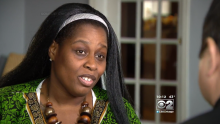
Video of the incident, showing officers pepper spraying and dragging her as they laughed, was released April 28.
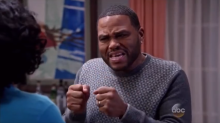
“Let’s say they listen to the cops and get in the car,” Anthony Anderson’s character Dre said Feb. 24 on black-ish, referring to his kids, if they were to be arrested.
“Look what happened to Freddie Gray.”
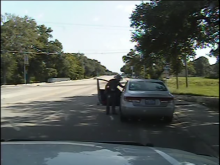
Bland was found dead in a jail cell after being arrested during a traffic stop, when she was pulled over for changing lanes without signaling. Police claim that her death was a suicide, but friends and family don’t believe it.

Jurors began deliberations on Monday afternoon. On Tuesday afternoon, the panel informed the judge it was deadlocked, and Williams ordered them to continue deliberating.
The panel, made up of seven women and five men, resumed deliberations Wednesday morning.
In Porter's trial, the prosecution brought medical experts, policing experts and other witnesses to show that Porter was criminally negligent when he failed to secure Gray in a seat belt in the van or call for a medic when Gray requested one.
The defense brought similar experts, as well as other Baltimore police officers, to show that Porter acted as a "reasonable officer" in his interactions with Gray and that Gray's injury was the result of an accident that Porter could not have prevented.

There has so far been no official accounting of what happened to Smith the morning of Nov. 1 on the second-floor landing of the Marbury Plaza Apartments in Southeast D.C. The Medical Examiner’s report tells part of the story, but there is still so much more unknown.
"I'm no longer stating that my son was beaten to death. My son was tortured to death. There are more injuries in the coroner’s report than I could visibly see with my eyes. There were injuries on my son’s back. He was hemorrhaging — the back. The back of his head was busted,” said mother Beverly Smith.
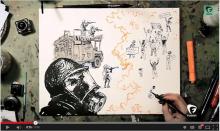
As the nation continues to wait for the grand jury’s decision whether or not to indict Darren Wilson for the killing of Mike Brown, one artist has connected the violent police acts in Ferguson to a broader narrative of state-sanctioned violence.
Molly Crabapple, known for her artistic contributions to Occupy Wall Street, combines the fast-paced style of dry-erase animation with colorful watercolor illustrations in her new video, ‘How Ferguson showed us the truth about police.’
WATCH:
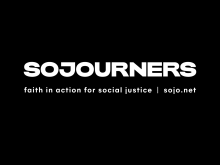
I was in South Africa on August 9, when a young, unarmed black man was killed by a white police officer in Ferguson, MO. It didn’t take long before Michael Brown’s story was on all the news channels in South Africa. After that, in every media interview I did Ferguson came up. “How could this have happened?” all the journalists asked. When I laid out the pattern of this happening regularly to men of color in America at the hands of white police or other men with guns, they were stunned. “White cops couldn’t get away with that anymore in South Africa,” they said.
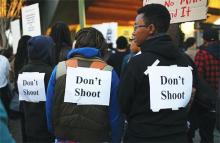
AFRICAN AMERICANS around the country are finding it is dangerous to call 911. Jack Lamar Roberson’s family in Waycross, Ga., discovered this the hard way when they placed an urgent call to 911 in October 2013 because his fiancée thought that he had taken an overdose of diabetes medicine.
Instead of sending EMTs, the dispatcher sent the police. Within 20 seconds of being in the house, police shot Roberson nine times, with bullets striking his back, arms, chest, and head as he held his arms up in the air. Although he was a veteran, he did not die from bullet wounds at the hands of strangers in a foreign land. Instead, white police gunned him down in his home.
Killings like this—which could be called anti-black hate crimes by police—are far too common. “Operation Ghetto Storm,” a 2012 report by the Malcolm X Grassroots Project, revealed that white police officers, security guards, or vigilantes kill an unarmed black man, woman, or child every 28 hours in the U.S. In 2012, police officers shot 57 people in Chicago—50 were black, two were white. Miami police officers killed seven black men within eight months in 2011. The Houston-based African-American News & Issues headlined an article this spring: “Open Season on Blacks in Texas: Cops Are Shooting First & Not Asking Questions.”
These police killings of black people emerge out of a culture and system of white supremacy. In such a context, police killing of black people is not a black problem. It is an American problem that shreds the curtains of democracy.
In recent weeks, Facebook and other social media have clearly demonstrated their capacity to do far more than just allow us to keep in touch with our family and friends. They have proven to be powerful organizing tools, capable of assisting in the creation of broad international movements for social change. Social media has proven to be a particularly powerful tool in countries in which basic democratic rights such as a free press and the right to assembly are severely restricted. At the same time, Facebook and YouTube are increasingly rendering international borders as meaningless. Western media coverage of the recent popular uprising in Egypt consistently emphasized the catalytic role of Facebook in galvanizing youth and young adults to take action against an entrenched regime that had long been viewed as impenetrable. In the days after Mubarak's departure, both the New York Times and The Los Angeles Times published lead stories describing the role of certain Facebook pages in not only serving as a call to action, but as a space in which emerging activists in Tunisia and Egypt were able to share lessons with each other. These young activists had not only managed to evade the reach of both nations' security police, they had also sidelined older opposition parties such as the Muslim Brotherhood in Egypt.